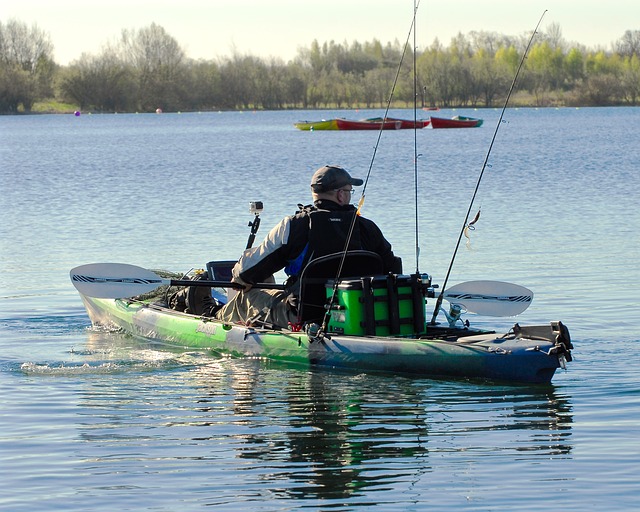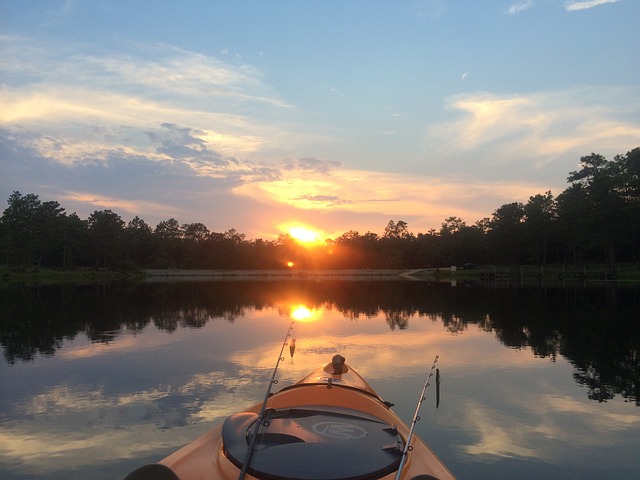Kayak fishing is growing in popularity. One big reason why is the fact that kayaks are so quiet as they glide through the water. They allow anglers to approach fish in a stealthy way, without spooking them and scaring them off.
As well, the best fishing kayaks have features which make it easy for fishing fans to cast their rods in comfort…and then reel in the big (or little) ones!
Excellent fishing kayaks also provide great kayak performance, while being very durable and offering enough storage space for fishing gear.
If you want to try kayak fishing, we recommend asking yourself some questions and seeking out specific features. We’re going to talk about these important questions and features today. Once you’ve read our convenient “fishing kayak checklist”, you’ll be able to run through it whenever you research a fishing kayak online.
Make sure that any kayak that you are interested in is appropriate for your needs. Also, make sure that it has every feature on the checklist, or most of them.
This guide is designed to help you find a fishing kayak which is an ideal fit, in addition to being a smart investment.
Fishing Kayak Checklist

First off, you’ve got to know what you want. This means thinking about your own fishing style. Are you planning on fishing in open water? If so, you’ll need a sea kayak which is designed to offer performance in tougher conditions. If you plan to stick with fishing in calmer, enclosed waterways, or partially-enclosed estuaries, you will do better with a touring-style kayak, which is designed for less rigorous water conditions.
Also, ask yourself if you’re planning to use the kayak solely for fishing, or if you plan to use it for recreation, too.
Key Factors to Consider
Next, you’ll need to decide whether or not to invest in a sit-in or sit-on-top kayak. We definitely recommend the sit-on-top styles for fishing! Sit-on-top kayaks are a lot safer for anglers, especially when they are equipped with self-bailing systems. These types of kayaks have depressions on top, where fishermen and women sit. With a sit-on-top style, you won’t be inside of the kayak. You’ll have more room for movement.
As well, a SOT (sit-on-top) kayak will roll over without becoming waterlogged.
Also, you’ll need to consider weight. How much can your vehicle handle? You’ll need to do some research and see if your vehicle has a weight maximum for items which are attached to roof racks. Find a fishing kayak which fits the weight restriction.
Next, think about seating. There are basic seats and there are lawn chair-style designs, which offer impressive back support. If you’re going to use your kayak only for fishing, you may find that choosing a lawn chair-style design is smart. You’ll be more comfortable in the seat.
We also recommend giving some thought to storage space. Is a fishing kayak that you are interested in roomy enough in terms of providing space for your fishing gear? It should be.
Also, you should invest in a fishing kayak which has a rudder. You’ll find that staying on track is much easier with a rudder at the ready.
Go for a kayak which is roto-molded. It won’t have a seam and this will dramatically minimize the risk of leaks. It will be constructed in one piece, rather than two. Two-piece designs which are joined together are much more prone to leaks.
Another thing to think about is whether or not a kayak that you like has compatibility with add-ons. Lots of anglers modify their kayaks to boost their value as fishing vessels.
As well, you should know that some modern fishing kayaks have pedals. If you don’t want to paddle all of the time, you may find that choosing a kayak with this feature makes sense.
In addition, some kayaks allow anglers to “stand and fish”. If you want to stand, you’re better off hunting for these types of kayaks.
Now, let’s summarize these important features. Check and see if a kayak that you’re looking at online has them all:
- sit-on-top style?
- self-bailing system?
- weight – does it fit your vehicle’s weight maximum?
- basic seat or “lawn chair” seat?
- rudder system?
- roto-molded design?
- compatibility with add-ons?
- pedals or paddling-only?
- stand-and-fish capacity?
Length and Width

With kayaks, physics dictates that longer kayaks move faster in the water, but are harder to maneuver than shorter kayaks. You’ll need to decide what’s more important – length or width.
Most anglers go for longer kayaks, which measure at least thirteen feet in length. They go for longer styles because they offer better tracking.
Tracking is all about moving in a straight line, rather than veering off to one side or another.
If you’re the type of angler who wants to portage your kayak to hard-to-reach spots, you may find that a shorter fishing kayak, such as a nine-foot design, is easier to carry. Just be aware that tracking isn’t likely to be as good. You may need to correct for veering to the left or the right as you paddle.
Again, there’s no perfect fishing kayak for everyone. It depends on what you want from your boat.
In terms of width, a wider design will offer more stability and stability is important. For this reason, we think that you should stay away from narrower kayak designs. They aren’t really the best choices for fishing.
Budget or Premium – What’s the Difference?

With fishing kayaks, do you get what you pay for? Yes, more or less. This means that you’ll be smart to pay a bit more for a fishing kayak with all of the right features, which earns rave reviews from anglers and also comes from a trusted manufacturer with a proven track record.
It’s possible to access superior quality for about fifteen hundred bucks or even less. Some fishing fans who can’t afford fully-rigged kayaks make the decision to go for pre-owned models. Of course, when they do buy used designs, they have no warranty to protect them.
When you buy a new kayak, you should definitely access a strong warranty.
A perusal of fishing kayaks at the world’s largest online retailer showed that the cheaper styles may be had for a few hundred bucks. Mid-range styles range in price from between just over three hundred dollars up to three thousand bucks (we know that’s a big range!) . The most costly styles go for three thousand dollars up to almost seven grand.
Naturally, the cheaper styles are going to be more basic. However, they will still be fun to use. For example, a basic sit-on-top fishing kayak will typically offer storage space, enough width to provide good stability and sufficient length for decent tracking. However, it isn’t likely to offer a lot of bells and whistles, such as a lawn-chair style seat, pedals, a self-bailing system and a rudder system.
In the mid-range, you’ll get some perks, but you may not get all of them.




